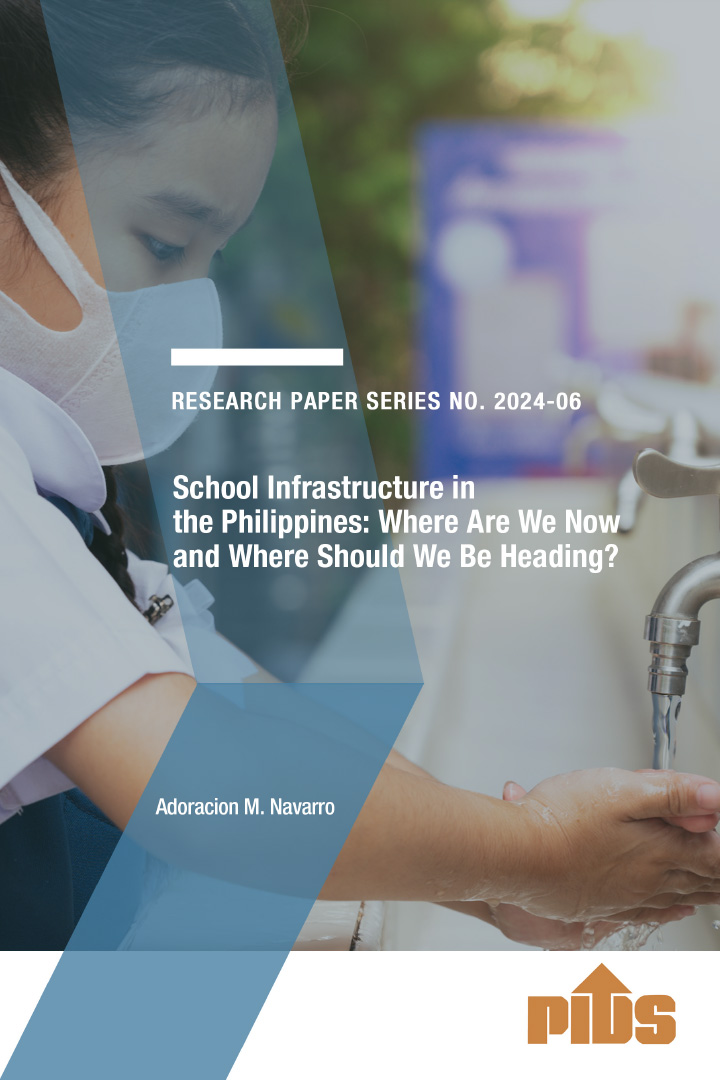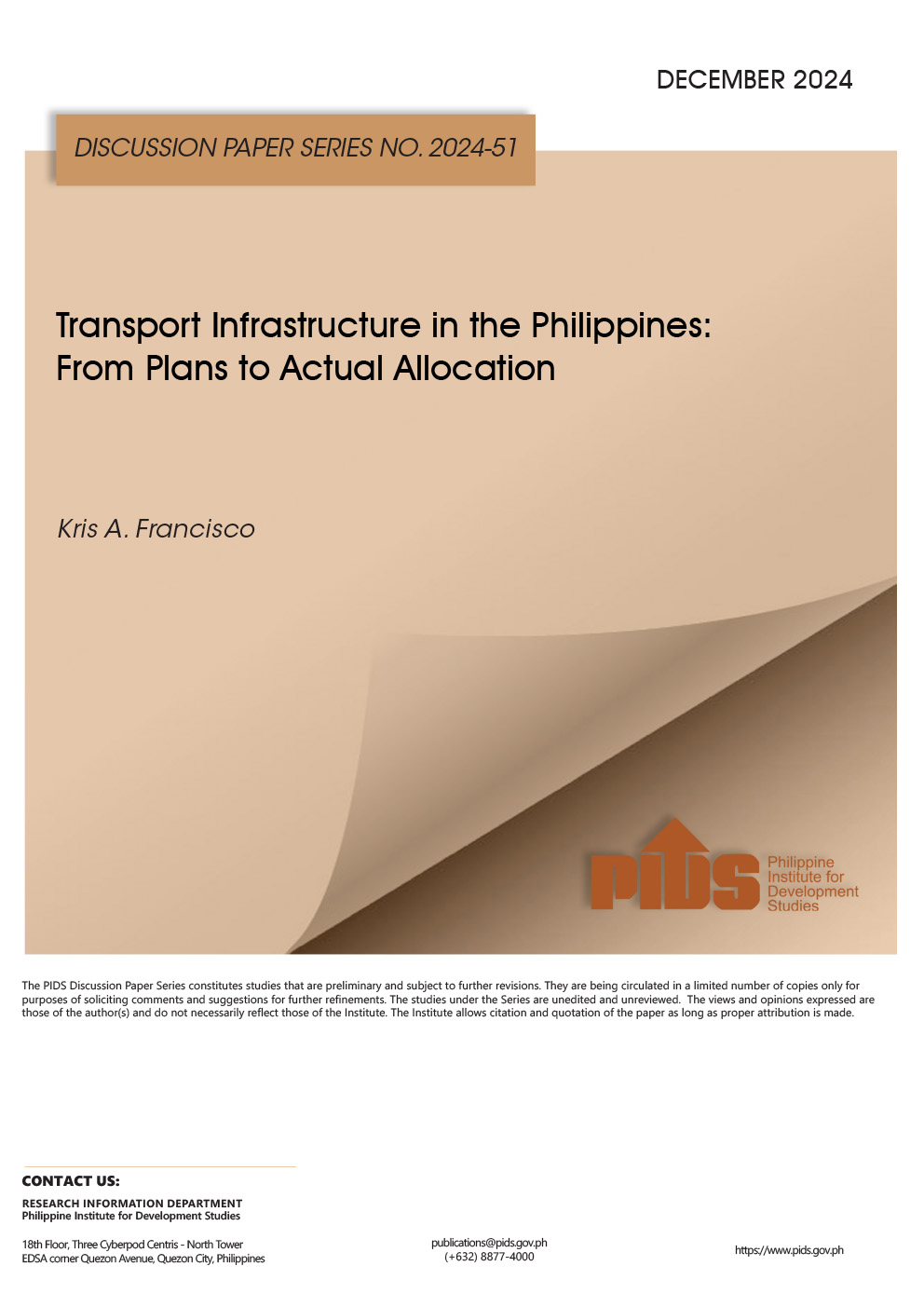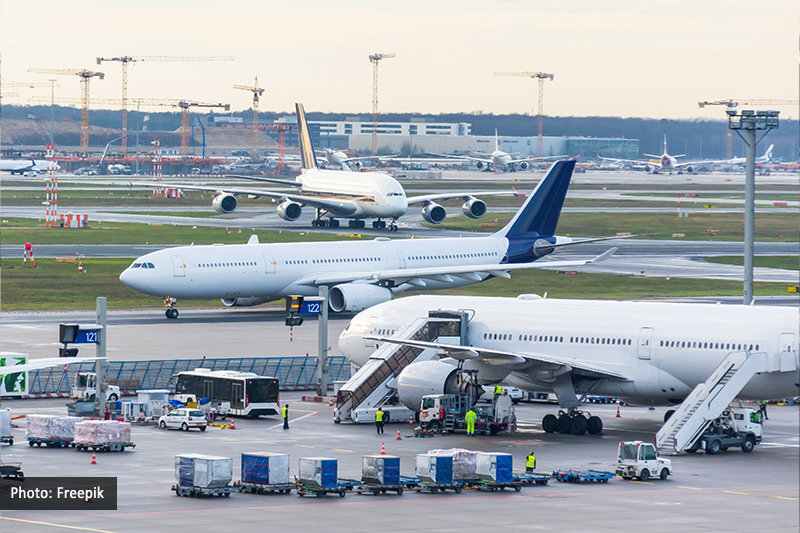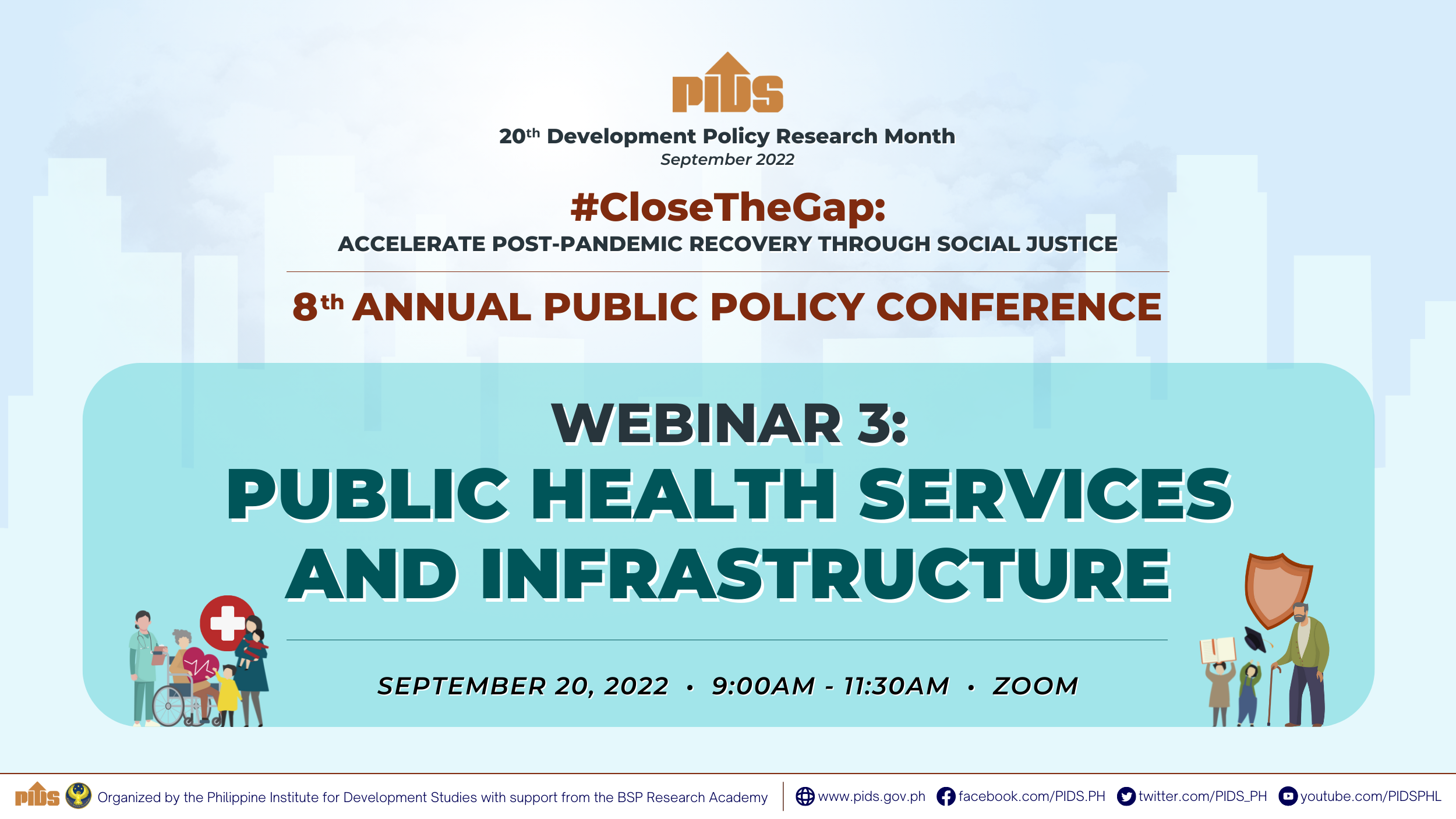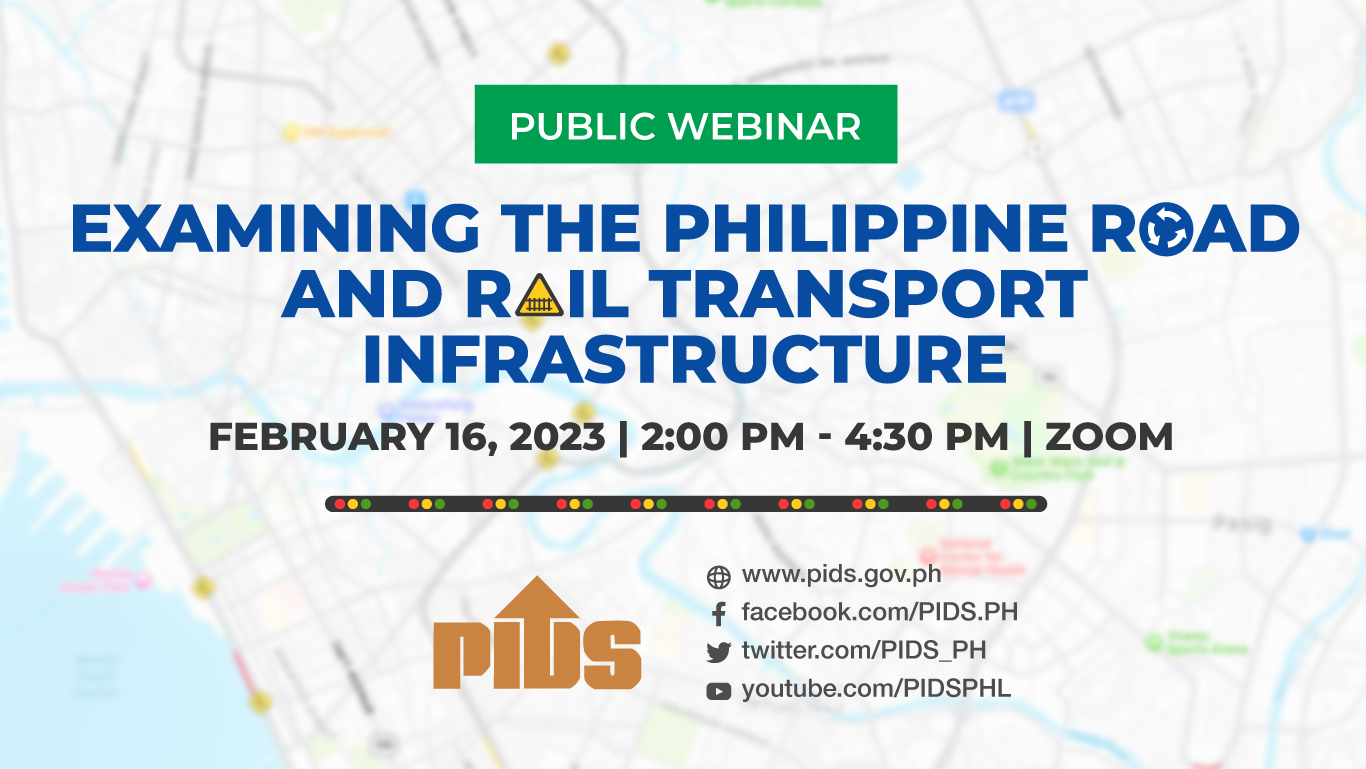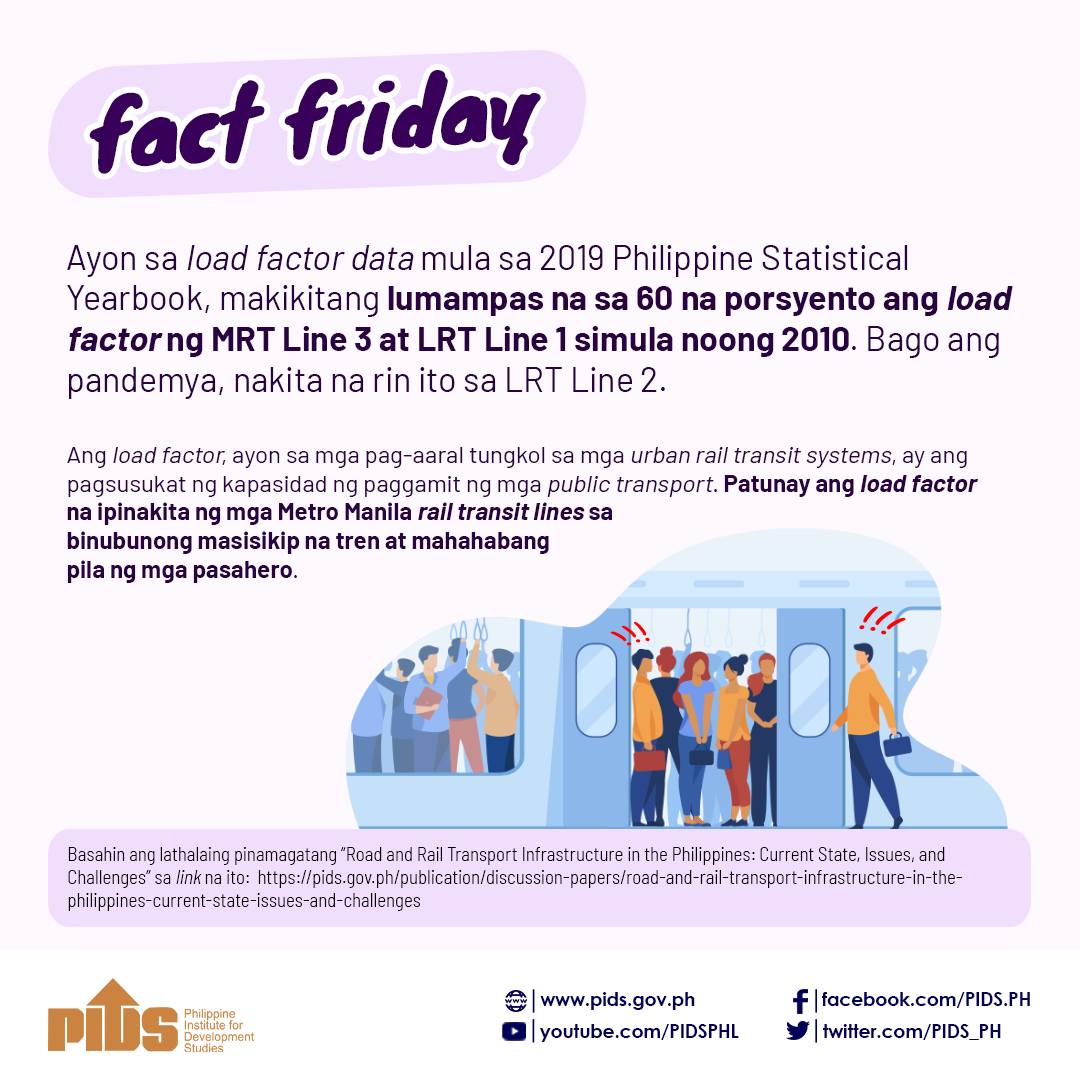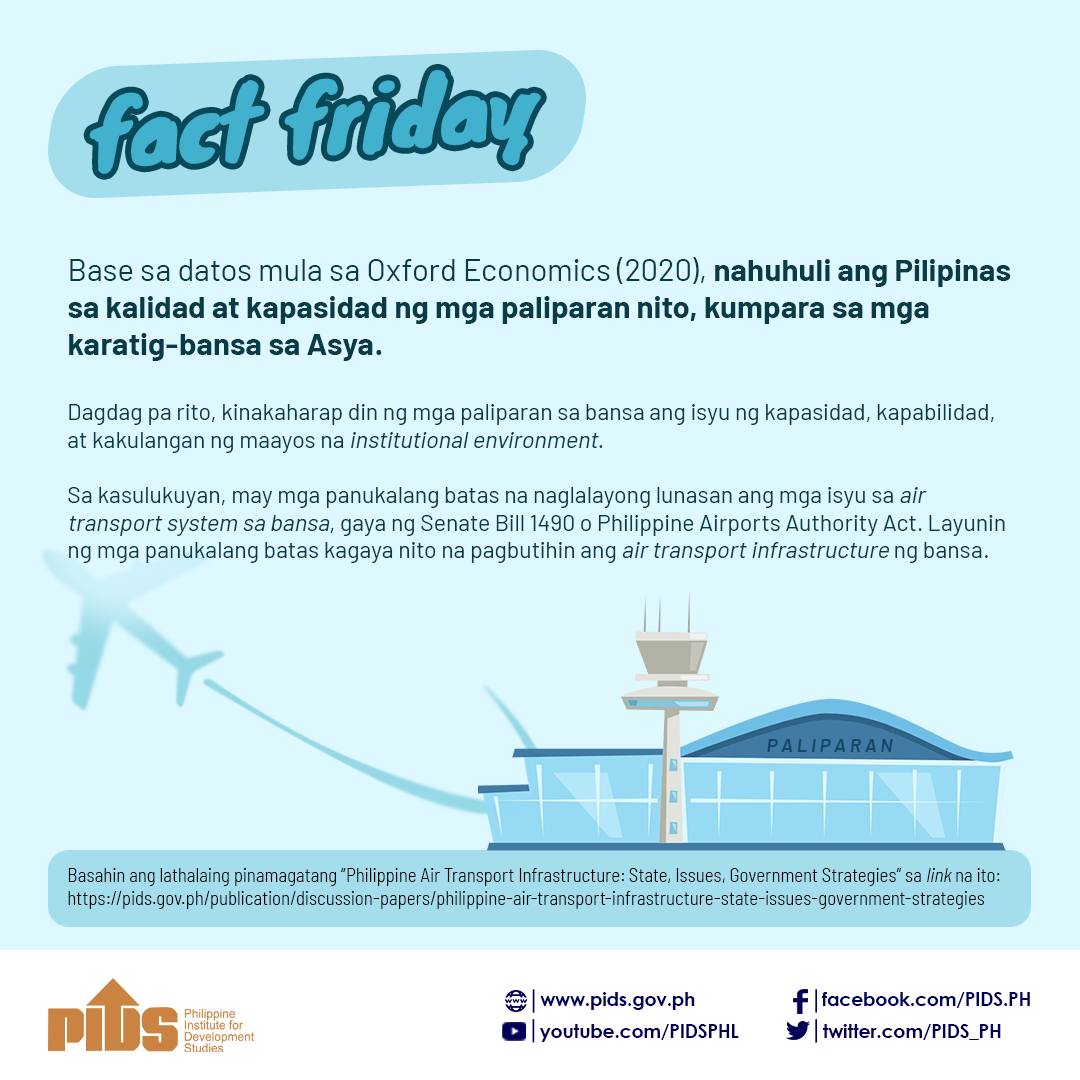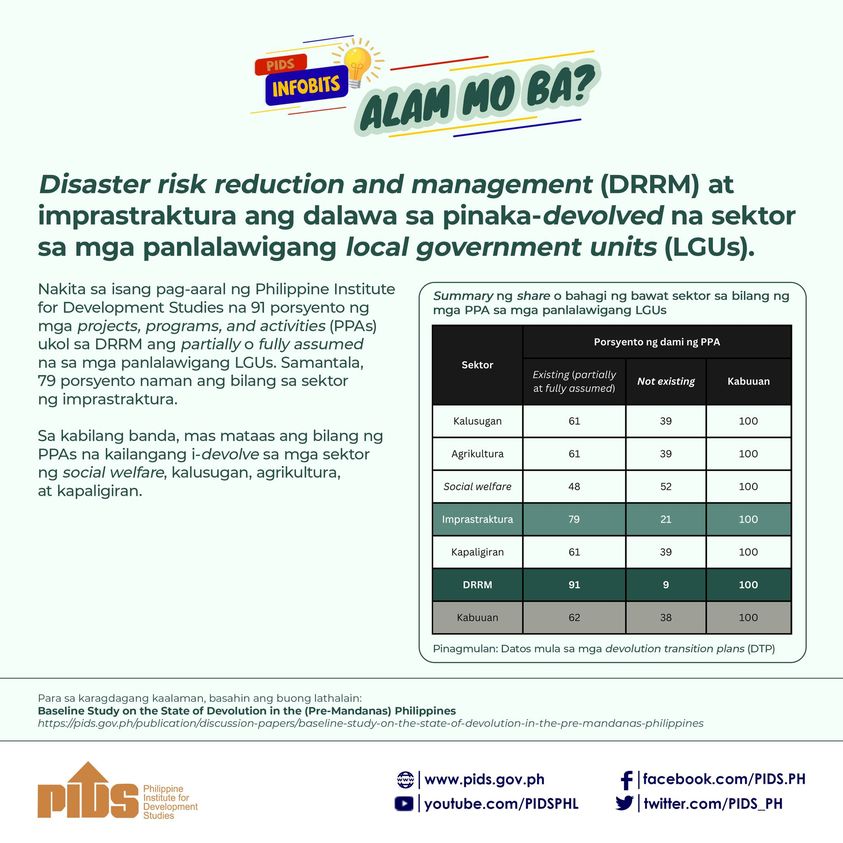The Philippines risks failing to fully enjoy the gains of its economic growth if the government does not adopt a strategic national urbanization blueprint and follow it through with strong implementation.
In a discussion paper originally presented to the Network of East Asian Think-Tanks in Singapore last September, Philippine Institute for Development Studies (PIDS) Senior Research Fellow Adoracion M. Navarro concludes that the status of the country`s urban planning and implementation is “fragmented and lacks complementarity”.
Navarro`s paper, “Scrutinizing Urbanization Challenges in the Philippines through Infrastructure Lens”, explores the experience of the Philippines in urban planning and how it stagnated. Navarro suggests that a coherent solution is not only found in promoting national coordination, but also in the opportunities and experiences of the country’s regional neighbors.
Past
There were attempts to organize settlement and introduce mass transport between precolonial and Spanish colonial times. But modern urban planning as we know it wasn’t introduced until the American colonial government commissioned Daniel Burnham to improve Manila.
After the country achieved full independence in 1946, the National Urban Planning Commission was created, but local governments undermined its recommendations and regulatory powers. This refractory pattern would continue, as Navarro`s paper demonstrates, and exacerbated by a failure in successive national administrations to strongly implement urban development plans.
These failures led to the decentralization of responsibilities to specific agencies. Navarro notes that oftentimes, these agencies “did more permitting and licensing”, foregoing their power to “craft strategic urban development plans with actual physical targets and that take into consideration circulation space, physical infrastructure, and connectivity or mobility in ever expanding urban areas”.
But it`s not just the habitual inefficiency of national agencies.
Local government units (LGUs), though required by law to produce a Comprehensive Land Use Plan, are often trapped in their own problematic practices. LGU infrastructure projects do not outlive administrations. Navarro says that they focus too much on residential or commercial plans, or are often too inward, failing to complement and capitalize on the opportunities of working with neighboring local communities.
Present
The percentage of Filipinos living in urban areas is expected by the UN to rise from its current 45.3 percent to 56.3 percent by 2030 and 65.6 percent by 2050. The problem, cited by the World Bank in their East Asia's Changing Urban Land Escape report, is that the rate of increase in urban land area does not match.
By 2010, 23 million Filipinos were living in urban areas, having grown at a 3.3-percent annual rate from the 17 million by the turn of the millennium. Meanwhile, the land area has only expanded annually at 2.2 percent.
For those in Metro Manila who personally deal with poor public infrastructure on a day-to-day basis, it is not surprising when Navarro points out that the country has to invest smartly in its physical capital to be able to cope with such economic demand. The Philippine ranks 98 out of 144 countries in overall quality of infrastructure, bested by nearly all of its ASEAN neighbors except Vietnam, Lao PDR, and Myanmar.
She says the problem used to be the availability of resources. But now, the country has more fiscal room to move. What stands in the way is a historical lack of political will, and she is not alone in this observation.
The World Bank 2014 report on the country's economic picture stated that infrastructure has surpassed corruption as the country's foremost development obstacle.
A World Economic Forum observer complimented the Aquino administration`s advocacy for good governance, but added that good governance isn`t only about rooting out the corruption in the system. Richard Javad Heydarian, an Asia-Pacific economic analyst, said, "It is also about timely and effective implementation of strategic projects".
But prior to implementation, Navarro claims there are issues to tackle when it comes to designing plans.
The National Urban and Housing Development Framework for 2009-2016, which was designed by the Urban Development Coordinating Council and PIDS, contains all the recommendations that address urban competitiveness, poverty reduction, ensuring housing affordability and delivery, among others.
However, Navarro says there are a lot of areas for improvement.
"The plan has no articulation of purpose-driven and deliberate facilitation of goods and people mobility through strategic transport. It also did not articulate how urban development and growth corridors can be shaped by strategic infrastructure investments."
The national level of urban planning still lacks the level of direction and cohesion that is necessary to sustain and optimize the economic growth already achieved by the country.
Unaddressed, the problem trickles down and is exacerbated by local government level`s preference for short-term plans, which lack cohesion and complementarity.
Future
Navarro points to ASEAN and China, Japan, and South Korea as examples for alternative solutions. She encourages the country`s policymakers and decisionmakers to study how the strategic infrastructure investments of neighboring countries drove the direction and success of their urban developments.
Recently, the International Enterprise Singapore published a report encouraging Singaporean companies to invest in Philippine infrastructure. The economic environment is enticing, the report claimed, but the exact same setbacks and concerns Navarro cited in her discussion paper were mirrored.
The opportunities are many "aviation, railway, water, energy" but if the political culture remains, and this is not just about corruption, but also about discontinuity, lack of efficient planning, and an absent political resolve, Singaporean companies will remain reluctant.
In summary, Navarro encourages the Philippine government, from the national to the local level, to participate and commit to strategic national physical planning. Leaders must produce a framework that streamlines the implementation of infrastructure development in local governments while bearing in mind an overarching vision that also capitalizes on available local resources. ###
In a discussion paper originally presented to the Network of East Asian Think-Tanks in Singapore last September, Philippine Institute for Development Studies (PIDS) Senior Research Fellow Adoracion M. Navarro concludes that the status of the country`s urban planning and implementation is “fragmented and lacks complementarity”.
Navarro`s paper, “Scrutinizing Urbanization Challenges in the Philippines through Infrastructure Lens”, explores the experience of the Philippines in urban planning and how it stagnated. Navarro suggests that a coherent solution is not only found in promoting national coordination, but also in the opportunities and experiences of the country’s regional neighbors.
Past
There were attempts to organize settlement and introduce mass transport between precolonial and Spanish colonial times. But modern urban planning as we know it wasn’t introduced until the American colonial government commissioned Daniel Burnham to improve Manila.
After the country achieved full independence in 1946, the National Urban Planning Commission was created, but local governments undermined its recommendations and regulatory powers. This refractory pattern would continue, as Navarro`s paper demonstrates, and exacerbated by a failure in successive national administrations to strongly implement urban development plans.
These failures led to the decentralization of responsibilities to specific agencies. Navarro notes that oftentimes, these agencies “did more permitting and licensing”, foregoing their power to “craft strategic urban development plans with actual physical targets and that take into consideration circulation space, physical infrastructure, and connectivity or mobility in ever expanding urban areas”.
But it`s not just the habitual inefficiency of national agencies.
Local government units (LGUs), though required by law to produce a Comprehensive Land Use Plan, are often trapped in their own problematic practices. LGU infrastructure projects do not outlive administrations. Navarro says that they focus too much on residential or commercial plans, or are often too inward, failing to complement and capitalize on the opportunities of working with neighboring local communities.
Present
The percentage of Filipinos living in urban areas is expected by the UN to rise from its current 45.3 percent to 56.3 percent by 2030 and 65.6 percent by 2050. The problem, cited by the World Bank in their East Asia's Changing Urban Land Escape report, is that the rate of increase in urban land area does not match.
By 2010, 23 million Filipinos were living in urban areas, having grown at a 3.3-percent annual rate from the 17 million by the turn of the millennium. Meanwhile, the land area has only expanded annually at 2.2 percent.
For those in Metro Manila who personally deal with poor public infrastructure on a day-to-day basis, it is not surprising when Navarro points out that the country has to invest smartly in its physical capital to be able to cope with such economic demand. The Philippine ranks 98 out of 144 countries in overall quality of infrastructure, bested by nearly all of its ASEAN neighbors except Vietnam, Lao PDR, and Myanmar.
She says the problem used to be the availability of resources. But now, the country has more fiscal room to move. What stands in the way is a historical lack of political will, and she is not alone in this observation.
The World Bank 2014 report on the country's economic picture stated that infrastructure has surpassed corruption as the country's foremost development obstacle.
A World Economic Forum observer complimented the Aquino administration`s advocacy for good governance, but added that good governance isn`t only about rooting out the corruption in the system. Richard Javad Heydarian, an Asia-Pacific economic analyst, said, "It is also about timely and effective implementation of strategic projects".
But prior to implementation, Navarro claims there are issues to tackle when it comes to designing plans.
The National Urban and Housing Development Framework for 2009-2016, which was designed by the Urban Development Coordinating Council and PIDS, contains all the recommendations that address urban competitiveness, poverty reduction, ensuring housing affordability and delivery, among others.
However, Navarro says there are a lot of areas for improvement.
"The plan has no articulation of purpose-driven and deliberate facilitation of goods and people mobility through strategic transport. It also did not articulate how urban development and growth corridors can be shaped by strategic infrastructure investments."
The national level of urban planning still lacks the level of direction and cohesion that is necessary to sustain and optimize the economic growth already achieved by the country.
Unaddressed, the problem trickles down and is exacerbated by local government level`s preference for short-term plans, which lack cohesion and complementarity.
Future
Navarro points to ASEAN and China, Japan, and South Korea as examples for alternative solutions. She encourages the country`s policymakers and decisionmakers to study how the strategic infrastructure investments of neighboring countries drove the direction and success of their urban developments.
Recently, the International Enterprise Singapore published a report encouraging Singaporean companies to invest in Philippine infrastructure. The economic environment is enticing, the report claimed, but the exact same setbacks and concerns Navarro cited in her discussion paper were mirrored.
The opportunities are many "aviation, railway, water, energy" but if the political culture remains, and this is not just about corruption, but also about discontinuity, lack of efficient planning, and an absent political resolve, Singaporean companies will remain reluctant.
In summary, Navarro encourages the Philippine government, from the national to the local level, to participate and commit to strategic national physical planning. Leaders must produce a framework that streamlines the implementation of infrastructure development in local governments while bearing in mind an overarching vision that also capitalizes on available local resources. ###

